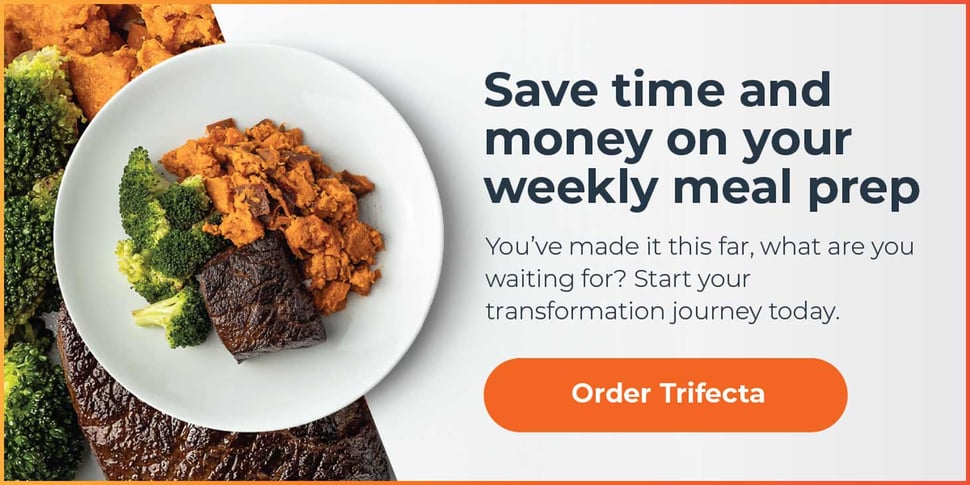Of all the meal plans out there, a whole foods plant-based diet is one of the most colorful, packed with minimally processed and fresh foods improving weight loss and overall wellness.
This article provides you with everything you need to know about whole food plant-based diet, including possible health benefits, a grocery list, and easy plant-based recipes to get you inspired through your transformative health journey.
What is a Whole-Food Plant-Based Diet?
WFPB (shorthand for whole food plant based) is a mouthful to say but the name is self-explanatory. This plant-based diet focuses on incorporating a bountiful amount of whole foods to support a sustainable and healthy lifestyle while limiting processed foods and animal-based products.
This plant-based diet may be right for you if you’re looking to improve your health and naturally lose weight while also:
- Increasing your intake of colorful and phytonutrient-dense fruits and vegetables
- Reducing your environmental impact from a plant-based diet
- Learning more about ingredient quality and sourcing
- Enjoying a boost of health benefits from a whole foods-based diet
The WFPB diet is a lifestyle approach, fostering consciousness around food quality and ingredients; increasing your awareness of where your food is coming from and how it supports your overall health and wellness.
We can break down the whole-food plant-based food plan into two parts: whole-food and plant-based.
Whole foods are ingredients that are as closest to their natural state as possible (1).
In many cases that can be defined as fresh or frozen single foods prepared with minimal cooking or preparation as possible. Refined, processed, and artificial foods are generally off limits which is the big difference between a whole-foods plant-based diet vs a plant-based diet, vegan diet, or vegetarian diet.
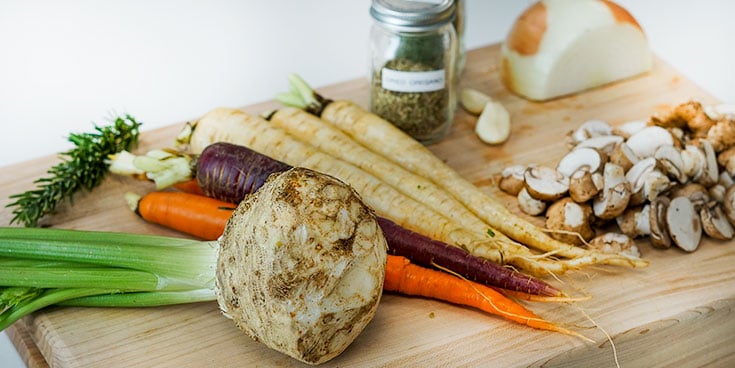
Plant-based is even more self-explanatory: foods should come from plants, not animals.
The WFPB diet is less strict than vegetarian and vegan diets in that you can still enjoy the occasional animal product but to enjoy the long-term benefits of a plant-based diet it is encouraged to avoid them.
The basic parameters of a WFPB diet are in short:
- Focus on eating whole foods in their most natural form, such as plant proteins, healthy fats, nuts, seeds, fruits, and vegetables
- Emphasize food quality, aim to source your whole foods locally and purchase organic whenever possible, and look to food lists such as the EWG’s Dirty Dozen and Clean Fifteen to help prioritize what to purchase organically to reduce consumption of pesticides and herbicides
- Eliminate refined sugars and processed foods
- Reduce or avoid the consumption of animal products
When did the Whole-Food Plant-Based Diet Become Popular?
The whole-foods plant-based diet has been around for centuries, WW2 the average American diet could have been considered a WFPB diet as many communities relied on local farms as food storage wasn't as common and industrial agriculture wasn't as evolved; the first commercially available refrigerators weren’t released until the early 1920s (2).
The whole food plant based diet isn't something new to be invented, but rather something old that some are revisiting and revitalizing to help them reach their health and wellness goals.
The Post WW2 agricultural food production boom didn’t just change the way our food was produced, it changed our relationship with food, our health, and our planet.
Foods that were cheap to produce but highly profitable became widespread, artificial ingredients were introduced to modify flavor, and chemicals and preservatives were added to aid in shelf life and create an industrial farming model (3).
All of this efficiency came at the cost of nutrition and Americans found themselves eating more and more empty calories to satiate their appetites, while also increasing their consumption of heavily processed foods. The results of this have been seen in the increase in obesity, diabetes, cardiovascular disease, and other chronic diseases (4).
The whole-food plant-based diet gained familiarity toward the end of the 20th century when dietitians began using the phrase to differentiate the diet from vegetarian diets that often relied on eating processed foods and non-meat animal products that were still technically "plant-based".
How a Whole-Food Plant-Based Diet May Benefit Your Health
In America in 2020 over 40% of adults are obese, 9% struggle with type 2 diabetes, and 40% battle with at least one chronic disease (5,6,7).
Modern medicine recognizes the critical impact lifestyle factors and proper nutrition have on the prevention, development, and management of disease and its overall connection to our health.
Changes to your diet and lifestyle, big or small, can vastly improve your overall health and wellbeing, such as facilitating weight loss and blood sugar management (8).
Research suggests that eating a whole food plant-based diet in coordination with a healthy lifestyle can lead to a reduced risk for the development of (1);
- Cardiovascular disease
- Hypertension
- Diabetes
- Certain types of cancer
- Cognitive impairment or dementia
A large systematic review of 19 studies implementing a variation of a plant-based diet and lifestyle modifications reported reductions in overall weight, body mass index, cholesterol, insulin resistance, and overall increase in quality of life (1).
Another systematic review containing more than 200,000 male and female participants found that having a diet that emphasized healthy plant foods while low in animal foods was associated with a reduction of about 34% in the risk of diabetes (9).
The health benefits of eating more fruits and vegetables come from those rich in nutrient-dense plant foods such as whole grains, fruits, vegetables, nuts, and legumes and lower in less healthy plant foods such as refined grains and sugar-sweetened beverages associated (9).
The Whole-Food Plant-Based Diet and Our Planet
The famous French gastronome Jean Anthelme Brillant-Savarian once said, “Tell me what you eat and I will tell you who you are”; how you eat influences your health and the health of our planet.
Research continues to explore the potential economic and environmental benefits of transitioning to a plant-based diet, but so far the scientific evidence suggests that meat-based diets require more land, energy, and water resources than various vegetarian diets (10).
Reducing or eliminating consumption of animal products while increasing your purchasing of whole-foods can have a number of environmental and economical benefits.
Purchasing locally supports your local economy and farmers while reducing the reliance on older, less-sustainable farming practices. Check out your local farmers market or food co-op and get inspired to cook with the seasons using fresh vegetables and fruits!
The US food production system uses about 50% of the total US land area, 80% of the freshwater, and 17% of the fossil energy used in the country (10). Removing or reducing your consumption of animal products can have a beneficial effect on the environment by reducing greenhouse gas emissions, land use, and water use.
Overall, transitioning to a plant-based diet is more sustainable that the average American meat-based diet as it requires less land, water, and reliance on fossil fuels (11).
Animal welfare is also a major motivator for people to take on a plant-based diet. Some oppose the taking of another life outright while others boycott the treatment of animals on industrial farms, feedlots, and slaughterhouses.
Find out if a plant-based meal plan is for you!
How to Grocery Shop For A WFBP Diet
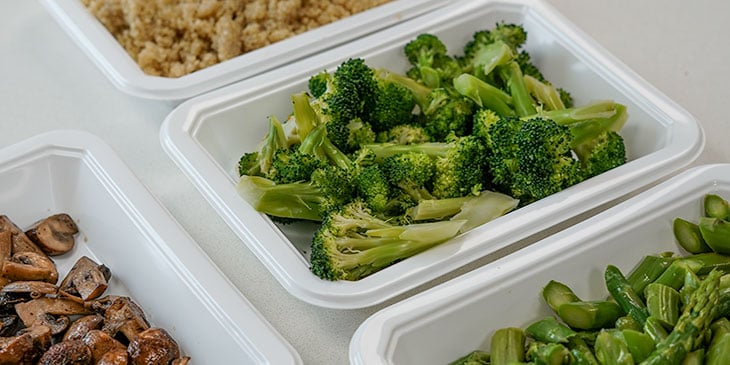
Real food is delicious! So many Americans enter their grocery stores and head straight for the interior aisles of processed food, never to know the incredible flavor of fresh produce living on the edges of the supermarket.
Fast food doesn’t bring much more to the table either. Eating fresh food that celebrates the flavors of a summer tomato or aromatic herb is an experience that makes one appreciate how and where an ingredient was grown and the delicacy of modern dining.
Whole-food plant-based meals offer a ton of variety. If it’s natural and comes from plants you’re, by and large, free to chow down. But there are important staples that will ensure plant-based dieters are getting the macronutrients they need for a healthy lifestyle.
Here is a grocery list of nutrient-dense ingredients to stock your refrigerator and pantry with:
- Leafy Green vegetables: collard greens, dandelion greens, kale, spinach, arugula
- Non-starchy vegetables: bok choy, asparagus, broccoli, cauliflower, bell peppers, okra, tomatoes, mushrooms
- Starchy vegetables: sweet potatoes, butternut squash, celery root, parsnips, potatoes
- Fruits: apples, berries, citrus fruits, stone fruits, bananas
- Legumes: black beans, chickpeas, peas, kidney beans, lentils
- Nuts & Seeds: almonds, walnuts, peanuts, cashews, sesame seeds, hemp seeds, pumpkin seeds
- Healthy Fats: avocado, minimally processed olive oil, coconut oil, avocado oil, etc.
- Whole Grains: Brown rice, quinoa, oats, rice or chick-pea-based high-protein pasta
- Condiments: whole-grain mustard, pesto, bbq sauce, chutney, salsa, harissa paste
- Plant-Based Proteins: tofu, tempeh, edamame
Add extra flavor and variety with 0 calories by utilizing herbs and spices!
Whatever you decide to stock your pantry with, here are a few simple guidelines for how to choose quality food products:
- Buy locally grown foods from a farmers market or community-supported agriculture (CSA’s)
- Purchase organic when possible
- Limit consumption of GMOs
- Look for 100% grass-fed meats
- Source pasture-raised eggs & poultry
What to Limit When Eating a WFPB Diet
Since the WFPB diet is flexible, there’s technically nothing you can’t eat. However, for WFPB diet to be effective, to consider yourself a practitioner, there are things to cut back on or avoid:
- Refined sugar
- White flour
- Processed frozen foods
- Saturated and trans fats
- Artificially flavored foods
- High fructose corn syrup
- Meat (specifically red meats and processed meat)
- Dairy products
- Eggs
One Week Whole Food Plant-Based Diet Meal Plan
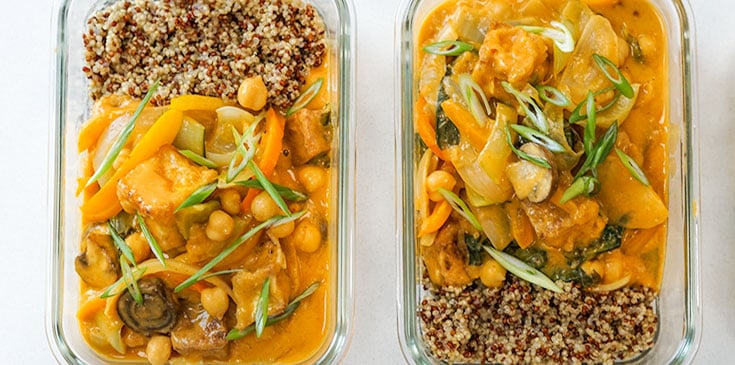
If you’re feeling motivated to eat your veggies we have put together an easy, meal-prep-friendly one-week meal plan to kick-start your plant-based journey. Below you’ll find two whole-food plant-based recipes for each meal period; these recipes are easy to execute and include plenty of colorful whole foods.
This one-week whole-food plant-based meal plan hovers around 1200 calories a day.
Figuring out exactly how many calories you need to consume each day will help you build your meal plan and track your food intake, helping you towards the healthiest version of you!
Try this free calorie calculator to get your total daily energy expenditure (TDEE) in a few minutes:
If you’ve found this plan but you need a higher calorie intake, all you need to do is multiply the portions to match your calorie needs. For example, if you need 1800 calories per day, you’ll need to increase portions by 33% or a factor of 1.33 (1800/1200 = 1.33). Just multiply all ingredients by a factor of 1.33 and your set!
What’s on your whole-foods plant-based menu?
|
Monday - Sunday |
|
|
Breakfast |
Tofu Breakfast Tacos in a Crunchy Jicama Shell or |
|
Lunch |
or |
|
Dinner |
Vegan Thai Red Curry and Vegetables or |
More Whole Food Plant-Based Meal Prep Ideas:
Delicious Breakfast Recipes
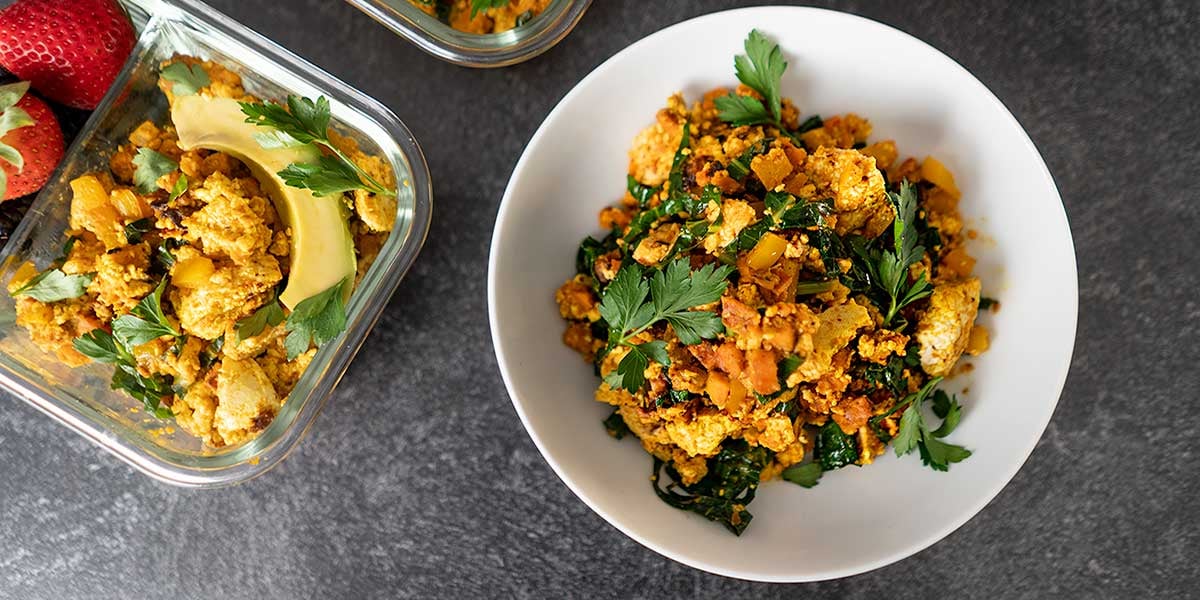
Cheesy Tofu Scramble With Pistachio Pesto
Fluffy Chickpea Flour Protein Pancakes
Mouth-Watering Lunch Recipes
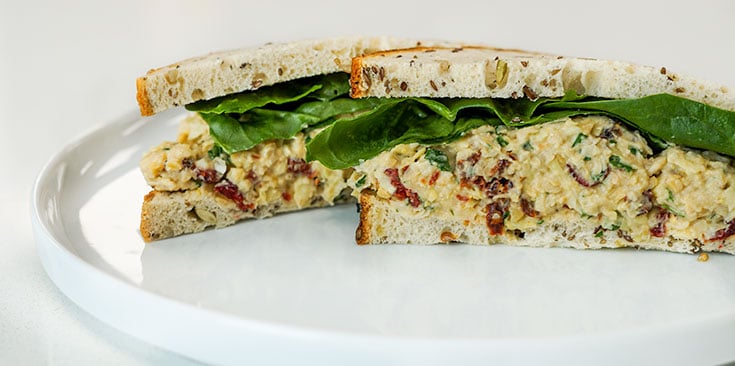
High-Protein Vegan 'Tuna' Salad
Curried Cauliflower and Broccoli Quinoa
Roasted Beet and Tabbouleh Salad
Vegan Ginger and Garlic Tempeh Bowl
Show-Stopping Dinner Recipes
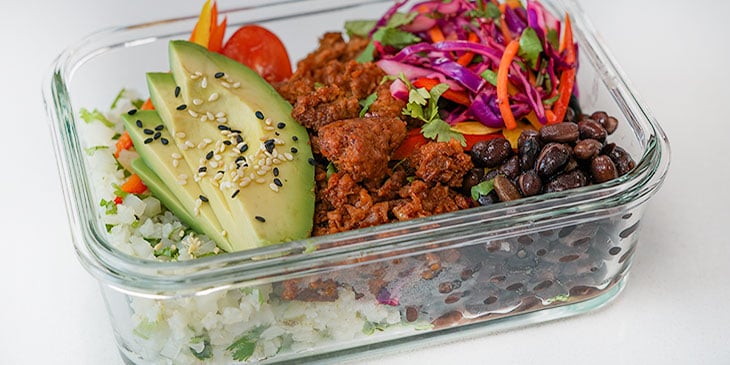
Vegan BBQ Tofu Stir Fry Recipe
Key Take Away from a Whole-Food Plant-Based Diet
As much of a lifestyle as a diet, the whole-food plant-based diet is about getting back to basics, before future foods and processed staples were the status quo.
Relying on fresh organic produce, preserving their essential nutrients, and enjoying them as close to their natural state as possible empowers plant-based eaters to enjoy wholesome meals that fuel good health, high energy, and a sustainable future for all.
It is important to remember that we still do not have the science to say eliminating meat or going 100% plant-based is more beneficial to your health than simply increasing your intake of nutrient-dense plant foods. A lot of individuals see significant improvements in health from a plant-based diet due to the increase in nutrition from consuming more nutrient-dense foods like plants.
At the end of the day assessing your personal health goals and current dietary habits will help you determine if a whole-food plant-based diet is right for you.
What things are most important to you in your diet?
Short on time to meal prep? Trifecta has your back! Use our meal delivery program as a tool to help you achieve your health and wellness goals.
Shop our plant-based meal plans for ready-to-eat, whole-food plant-based dishes packed with flavor and little to no added ingredients, including sodium!
We pride ourselves in preparing Trifecta meals with the freshest ingredients, so you know you'll be getting top-quality foods sourced ethically.
